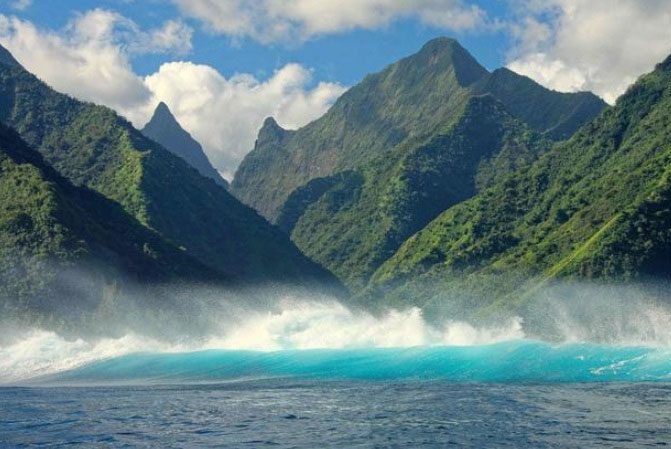The village with 1,455 residents in the southwest of Tahiti has been selected as the venue for the surfing events of the Paris 2024 Olympics, located 16,000 km away from the French capital.
So, what makes Teahupo’o village in Tahiti one of the most unique competition sites for the Paris 2024 Olympics?

Ocean waves at Teahupo’o village, Tahiti, Polynesia. (Photo: Getty Images).
The short answer: Tahiti is the largest island in French Polynesia and home to some of the most beautiful waves in the world.
France has several locations with excellent winter waves, but during the summer, the Bay of Biscay on the western coast of France almost has no waves. Fortunately for the Olympic organizers, France’s overseas territories boast ideal waves for athletes.
Tim McKenna, a former photographer who has lived in Tahiti since 2002, analyzes that the best wave location for the Olympics might be Saint-Leu on Reunion Island as it challenges athletes to showcase a variety of skills. However, Reunion Island also has significant risks of shark attacks, with 24 recorded incidents from 2011 to 2019, making Teahupo’o a more sensible choice.
This is the second time surfing has been included in the Olympic sports roster, with its debut at the Tokyo 2021 Olympics. Regarding the choice of Teahupo’o village, the Olympic organizers stated that it “aligns with Paris 2024’s ambition to host the Games across France.”
Although this will be the first time this village hosts an Olympic-level competition, Teahupo’o annually welcomes surfers from around the globe to compete for the Tahiti Pro title organized by the World Surf League.
In the surfing competition, judges and coaches will be stationed in a small tower, while journalists and photographers will be on nearby boats. Spectators will be required to watch the event via television as the event is not open to the public.
The surfing competition will take place over four days from July 27 to August 5. The actual dates will depend on conditions.
Another noteworthy point is that surfing was invented by ancient Polynesians. They later brought this pastime to Hawaii. Europeans became aware of surfing in the 16th century. During Captain James Cook’s three-month visit to Tahiti in 1769, botanist Joseph Banks, who was aboard Cook’s ship, documented in his journal how the locals surfed.


















































